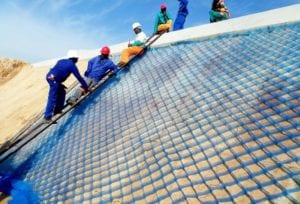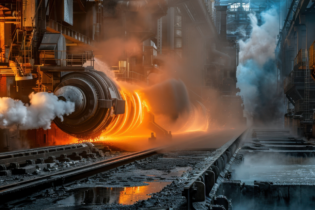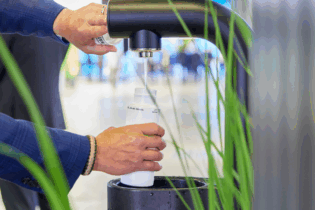repainted, so even in cases where the right construction steps have been taken, a lack of site maintenance will still lead to sick concrete syndrome. “Corrosion is a fundamental key to determining structural lifespan. There are numerous examples, from dams to power stations, where corrosion is causing loss of man hours, costing millions (if not billions) in repairs and causing anger and frustration among utility clients because of service interruptions,” says Hall.
Cost and time
“Steel is expensive and, therefore, so is rebar. Not to mention that high-quality concrete is needed to create reinforced concrete, further driving up costs. Contractors will often try to cut costs by adding stone or crusher dust to the mix. This affects workability and weakens the mix. Water will then often be added to compensate for the workability issue. This further weakens the mix. The only way to determine the strength of the final product after it has cured is to take core samples. On too many projects, this is treated as an afterthought, or neglected entirely, and when this happens, you get bridge collapses and other dangerous structural failures,” explains Hall. The solution Hyson Cells’ cast-in-situ pavers present an alternative to reinforced concrete slab construction. This system has no steel and uses a pumpable self-levelling sand grout. “Hyson Cells BubbleLock appears in the bill of materials as a ‘geocell’ but it is really quite a different product to conventional geocells,” explains Hall. “Geocells originated in 1979 when the US Army Corps of Engineers did research in reinforcing sandy beaches to allow them to be trafficked by wheeled vehicles. The South African Defence Force was, at that time, fighting in Angola and approached the local plastics industry to see if they could develop a similar product. Different companies came up with different suggestions, but I developed my own manufacturing method and Hyson Cells was born,” she adds. “Our research proved that a200 micron film would be sufficient due to the size and shape of the cells instead of the 2 mm thick sheeting that was used in the USA. This had the added benefit that it made the product affordable,” says Hall. Hyson Cells provides mats of 200 m² and larger. These are used as sacrificial formwork to cast articulated block paving with the formwork being left embedded in the paving to serve as perfectly fitted jointing. Maintenance comparison The maintenance cost of reinforced concrete is lower than plain concrete but very expensive to remove and replace if it does get sick concrete syndrome, as it has to be cut out with diamond or tungsten blades and jack hammers. Maintenance of Hyson Cells BubbleLock is quick, easy and inexpensive. The area to be repaired is excavated with a pick and there is no obstructing steel. A replacement patch of the formwork is pinned in position and filled with poured grout. If a quick set is required, calcium chloride can be used as an additive. Attitude of innovation Hyson Cells is a company dedicated to innovation. Its Wolmaransstad Sewage Treatment Plant is an example of another one of the company’s ABTs: one that uses a cone buried in the ground rather than the usual concrete cylindrical ring standing on top of it, which municipal engineers will be more familiar with. The revolutionary design completely negates the need for expensive rebar because the sloping walls of the cone provide the necessary structural support. “Structures such as clarifiers and methane digesters at wastewater treatment plants can be constructed at about 20% of the cost of cylindrical
reinforced structures currently in use,” says Hall. Her plant designs incorporate the use of algae for treating acid mine drainage water, as well as industry-leading biogas and bioenergy technologies, using both algae pellets and methane recovery to generate power for the national grid or internal plant use. Holistic engineering Many engineering firms will provide a by-the-numbers solution that meets the needs of the tender, or find an effective short-term solution. Where Hyson Cells differs is its holistic approach. The company sees the engineering problem as the one to be solved, asking how to deliver the most affordable solution without sacrificing quality. “Additionally, we never forget the communities where our solutions are installed, incorporating skills development and job creation opportunities as well as making community health, safety and security a key part of our attitude of innovation,” concludes Hall.









